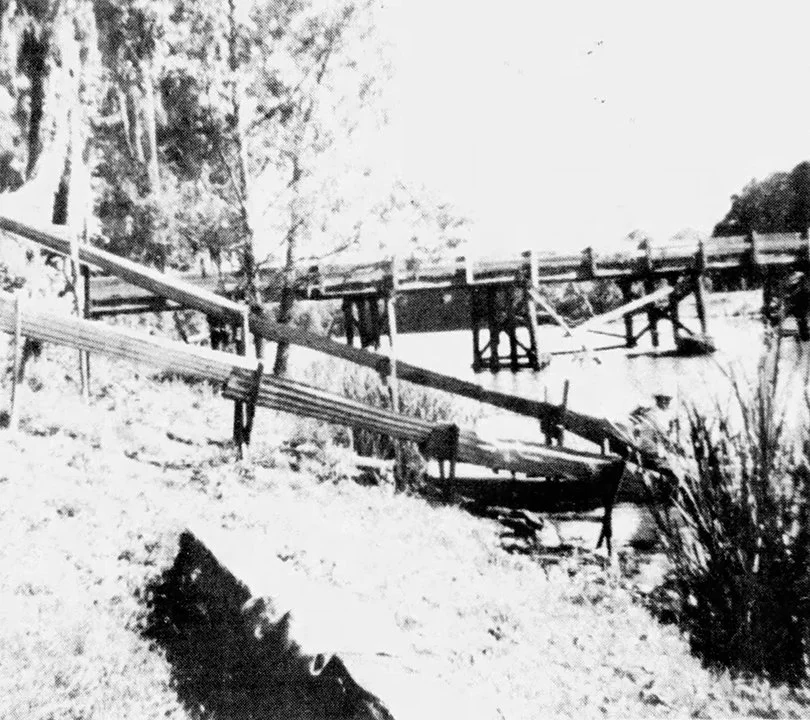Catahoula Plant: Commercial processing first began in 1949
Teche News—Wednesday, April 28, 1982
The commercial processing of crawfish is big business in St. Martin Parish today, with some 26 plants employing almost 1,000 persons on a seasonal basis. The processing industry got its start on the peaceful banks of Catahoula Lake back in 1949 when Abby Latiolais established the very first commercial cleaning plant near his home just across the Catahoula bridge.
No regulations
Robert Morrow, who was parish sanitarian at the time, remembers the day well. "Mr. Latiolais called me at the health unit to see what he had to do to meet the health department guidelines," Morrow recalls. "I checked with my supervisors and we quickly discovered there were no regulations governing the processing of crawfish."
With the support of Dr. Murphy Martin, Parish Health Unit Director, and assistance from the LSU Food Science Department in Baton Rouge, Morrow began working with Latiolais and other pioneer processors to develop equipment and guidelines for the fledgling packing plants.
Within the next few months, Berthmonse-Monte had opened a plant in the Henderson area, Morrow says. A couple of other early processors were Aristile Robin (who now owns and operates Robin's restaurant with his son Lionel) and the late Joe Amy.
Morrow recalls that Latiolais' plant consisted of a screened shed about 10 feet wide by 20 feet long. "The crawfish were boiled, peeled, and packed all in that same shed," he says.
As the demand for the tasty crawfish meat grew and the processors invested more money in their plants and equipment, Morrow and other health officials perfected the peeling and packing process under sanitary guidelines that assured a safe, high-quality product for the public.
Abby Latiolais opened the first commercial peeling plant back in 1949 on the banks of Catahoula Lake. The entire process of boiling, peeling and packing was done in one 10 by 20 screened shed. Crawfish shells were washed down the makeshift chutes into the lake. (photo courtesy of Marie Eastin)
Good cooperation
We always worked very closely with the processors, Morrow commented during an interview last week. We had great cooperation from them over the years, and never once have we had a hearing over any sanitary violations in St. Martin Parish. This is a fantastic record. According to Morrow, the secret in processing crawfish is cleanliness and proper cooling of the meat. Present-day plants have the peeling and packing room completely isolated from the area where the live crawfish are culled and boiled.
The meat should be cooled as quickly as possible after peeling. "We recommend that the meat be packed in one-pound bags," Morrow says. Early experimentation revealed that oblong bags were much better than the squat, round bags and containers used in the early days. The flatter bags expose more surface for quicker cooling. Most plants pack the freshly filled bags into wax boxes that hold 30 pounds of meat, alternating layers of ice between 10-bag layers of crawfish.
The crawfish fat, which adds so much of the distinctive taste to crawfish dishes, is usually packed in separate containers and frozen. Morrow was transferred from St. Martin Parish to Lafayette in September 1980 and now works as the seafood specialist for an 18-parish area. Part of his job is to assure that samples are collected at least once a month from each processing plant for analysis at the Acadiana Regional Lab in Lafayette.
In addition to the 26 plants in St. Martin Parish, Morrow estimates there are another 12 to 15 processors in the Acadiana area. St. Martin was not only the pioneer parish for crawfish processing, but it easily remains the top producer of cleaned crawfish meat.
The spot was a favorite for fishermen because catfish were attracted by the peelings. (photo courtesy of Marie Eastin)
Industry expanding
Charles Conrad of New Orleans, administrator of the Seafood Sanitation Unit of the State Department of Health and Human Resources, says that crawfish processors currently account for about 10 percent of all the seafood processing firms in Louisiana.
"The industry has definitely expanded in recent years," Conrad observes. "The crawfish market has a lot of potential for growth."
Conrad cited as an example of a foreign-owned processing plant in Baton Rouge that ships all of its output to Europe, primarily to France and Sweden. There can be little doubt that commercial crawfish processing has come a long way since Abby Latiolais' first plant in Catahoula 33 years ago, and the future holds a bright promise for the vital local industry.


